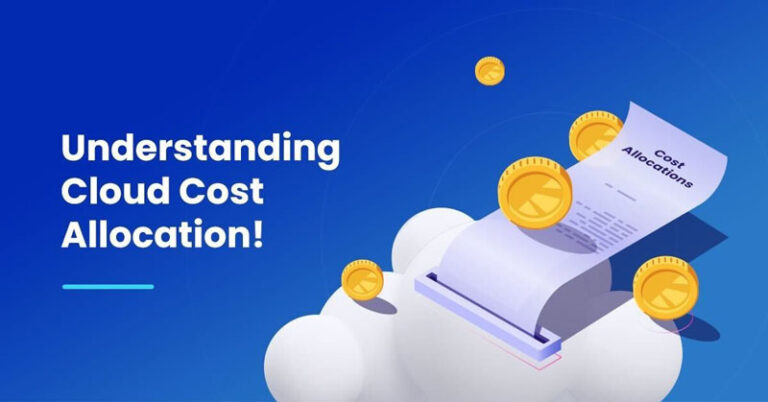As cloud usage increases, it becomes critical to allocate and track cloud costs to ensure optimal utilization of cloud resources while staying within budget. This post will discuss the basics of cloud cost allocation, its importance, and the different methods for effective cost allocation.
What is Cloud Cost Allocation?
Cloud cost allocation is the process of distributing cloud costs to individual teams, departments, or projects based on their usage. It involves tracking the usage of cloud resources such as storage, computing power, bandwidth, and software licenses, and assigning the costs to the respective users or projects.
The Importance of Cloud Cost Allocation
Cloud cost allocation is crucial for the following reasons:
- Cost Optimization: Cloud cost allocation helps identify the areas of high cloud usage and enables cloud cost optimization by identifying areas where resources can be shared or scaled down. This, in turn, helps businesses save money on their cloud bills.
- Budgeting and Forecasting: Effective cloud cost allocation enables businesses to budget and forecast their cloud costs accurately. It helps businesses plan their cloud expenses and allocate resources effectively.
- Transparency: Cloud cost allocation provides transparency into cloud usage and costs. It helps businesses track and manage their cloud resources more effectively and identify areas for improvement.
Methods for Cloud Cost Allocation
There are various methods for cloud cost allocation, including:
- User-Based Allocation: In this method, cloud costs are allocated based on individual user or department usage. It is suitable for businesses where users have different levels of cloud usage, and costs can be easily attributed to individual users or teams.
- Resource-Based Allocation: In this method, cloud costs are allocated based on the usage of specific cloud resources such as storage, computing power, or bandwidth. It is suitable for businesses where resources are shared among multiple teams, and costs can be attributed based on usage.
- Project-Based Allocation: In this method, cloud costs are allocated based on individual projects or initiatives. It is suitable for businesses where cloud resources are used for specific projects, and costs can be easily attributed to individual projects.
- Hybrid Allocation: In this method, a combination of user-based, resource-based, and project-based allocation is used to allocate cloud costs. It is suitable for businesses where cloud usage is complex and requires a more sophisticated cost allocation model.
Best Practices for Cloud Cost Allocation
- Define Clear Cost Allocation Policies: It is essential to define clear cost allocation policies that align with business goals and objectives. This helps ensure that cloud costs are allocated fairly and accurately and that all stakeholders understand their responsibilities.
- Monitor Cloud Usage and Costs: It is essential to monitor cloud usage and costs regularly to identify areas where costs can be optimized or shared. This helps businesses make informed decisions about their cloud resources and stay within budget.
- Use Cloud Cost Management Tools: Cloud cost management tools help automate the process of tracking cloud usage and costs and provide real-time insights into cloud spending. This helps businesses optimize their cloud costs and allocate them effectively.
- Review and Adjust Cost Allocation Models Regularly: It is essential to review and adjust cost allocation models regularly to ensure that they align with changing business needs and objectives. This helps businesses optimize their cloud costs and stay within budget.
What are the challenges to Cloud Cost Allocation?
While cloud cost allocation is critical for businesses to optimize their cloud costs, allocate resources effectively, and stay within budget, it also presents some challenges. Here are some of the common challenges to cloud cost allocation:
- Complexity: Cloud cost allocation can be complex, especially for businesses with multiple teams, departments, or projects. Tracking usage, assigning costs, and ensuring accuracy can be challenging and time-consuming, making it difficult to manage cloud costs effectively.
- Lack of Visibility: Lack of visibility into cloud usage and costs can make it difficult to allocate costs accurately. Without visibility, businesses may not know how much each team or project is using, making it difficult to allocate costs accurately.
- Difficulty in Attribution: Attributing cloud costs to specific teams, departments, or projects can be challenging, especially when resources are shared among multiple teams. This can result in inaccurate cost allocation, leading to over or underestimation of cloud costs.
- Changing Business Needs: Business needs and objectives can change over time, making it difficult to align cost allocation policies with these changes. Without adjusting cost allocation policies, businesses may not allocate costs effectively, leading to higher cloud costs and inefficient resource utilization.
Conclusion
Cloud cost allocation is critical for businesses that want to optimize their cloud costs, allocate resources effectively, and stay within budget. There are various methods for cost allocation, including user-based, resource-based, project-based, and hybrid allocation. By defining clear cost allocation policies, monitoring cloud usage and costs, using cloud cost management tools, and regularly reviewing and adjusting cost allocation models, businesses can optimize their cloud costs and achieve their cloud objectives.

0 Comments